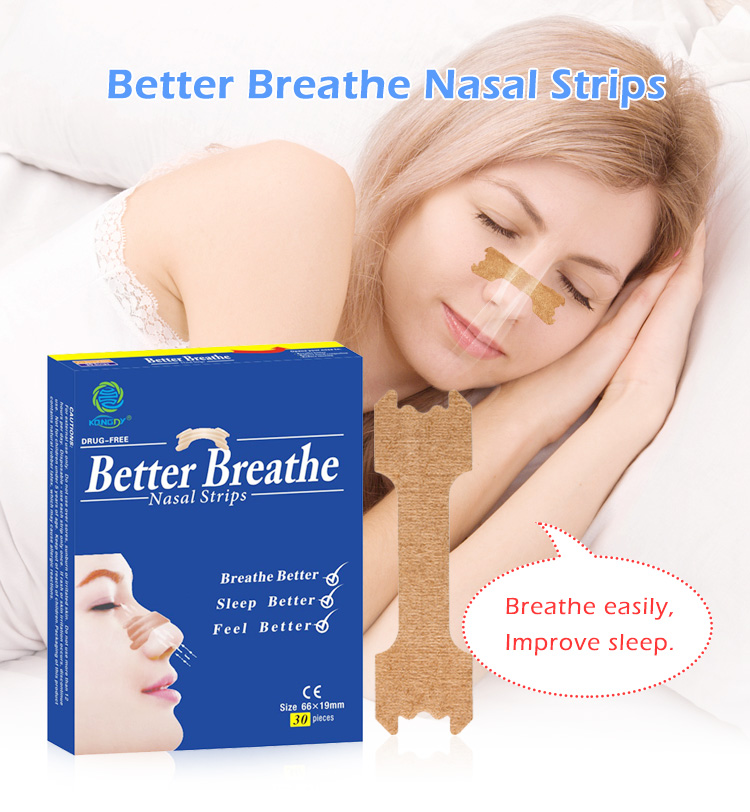Author:Kangdi 20-08-2024
Nasal strips have become increasingly popular as a non-invasive solution for individuals seeking to improve their breathing and sleep quality. These small, adhesive strips are designed to gently lift and open the nasal passages, providing immediate relief from nasal congestion and snoring.
The principle behind nasal strips is straightforward yet effective. When applied across the bridge of the nose, they use a spring-like action to pull the sides of the nose outward. This mechanical action widens the nasal passages, reducing airflow resistance and allowing for easier breathing. The increased airflow can significantly reduce snoring, as many snoring issues stem from nasal congestion or anatomical narrowing of the nasal passages.
One of the key advantages of nasal strips is their simplicity and ease of use. They require no special preparation or medical supervision and can be applied in seconds. This makes them an attractive option for individuals looking for an immediate, drug-free solution to breathing difficulties. They are particularly popular among athletes, who use them to enhance oxygen intake during physical activities, and individuals suffering from allergies or colds.
Nasal strips are typically made from flexible, spring-like bands embedded in a soft, hypoallergenic adhesive. The materials used are designed to be comfortable and safe for nightly use, with minimal risk of skin irritation. Many brands offer different sizes to ensure a proper fit for various nose shapes and sizes, maximizing effectiveness and comfort.
While primarily known for their benefits in reducing snoring and improving sleep quality, nasal strips have found applications in various other areas. They are often used by individuals with deviated septums or nasal valve collapse to provide temporary relief. Some users report benefits in managing symptoms of sleep apnea, although it's important to note that nasal strips are not a substitute for medical treatment of this condition.
Research has shown that nasal strips can be effective in improving nasal airflow and reducing snoring in many individuals. A study published in the Journal of Clinical Sleep Medicine found that nasal strips significantly reduced snoring intensity and improved sleep quality in participants with chronic nasal congestion.
As awareness of the importance of quality sleep grows, the popularity of nasal strips continues to rise. They offer a simple, non-pharmacological approach to addressing common breathing issues, making them an attractive option for those seeking to improve their sleep and overall well-being. With ongoing advancements in materials and design, nasal strips are likely to remain a key player in the realm of sleep and respiratory aids.
 0086 19937104978
0086 19937104978





